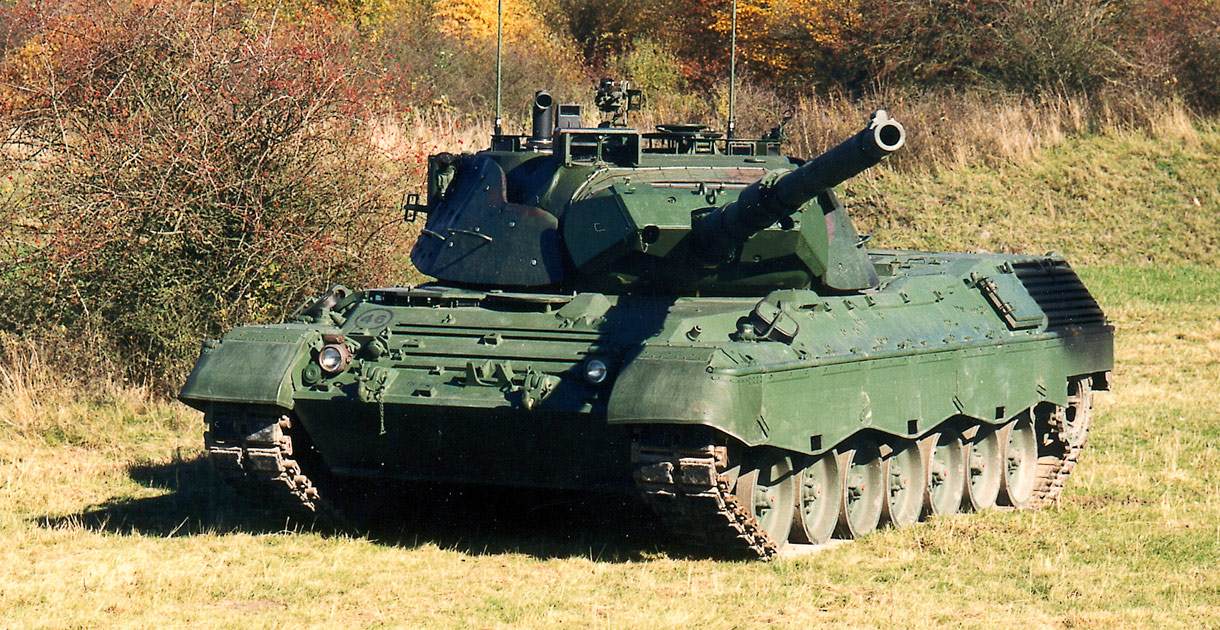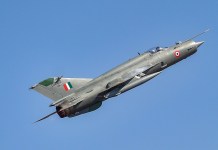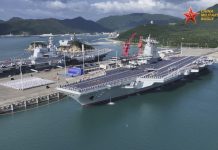As Ukraine is steadily securing the delivery of cutting-edge Leopard-2 tanks from NATO states ahead of a potential ‘spring offensive,’ Denmark has pledged 100 vintage Leopard-1 tanks to Kyiv in a recent announcement.
A month after Denmark first hinted at its willingness to deliver 100 Leopard-1 tanks to Ukraine, Denmark’s Acting Defense Minister confirmed the delivery earlier this month at a briefing with Ukrainian Defense Minister Oleksii Reznikov at Ukraine Media Center – Odesa.
The acting Danish Defense Minister Troels Lund Poulsen said, “We will start delivering Leopard-1 tanks to Ukraine before the summer. And then, hopefully, looking half a year ahead, it will be possible for us to donate about 100 Leopard-1 tanks, and that, I’ll say, would be a substantial thing for Ukraine’s army.”
Expressing his gratitude to Denmark, Reznikov said: “In the near future, we will hear ‘Leopards’ roaring with the Danish accent.” According to local Danish media, the Leopard 1A5 tank will be sent to Ukraine by the end of April or next month.
In February, Denmark joined ranks with NATO members Germany and The Netherlands to announce that the trio was planning to provide Ukraine with at least 100 refurbished Leopard-1 battle tanks in the coming months. This tank aid is in addition to the various variants of Leopard-2 tanks delivered to Kyiv.
The first objective of the group’s joint project is to send two tank battalions—or roughly 80 tanks—to Ukraine as soon as possible. The first tanks, which will be used to train Ukrainian forces, are anticipated to be available in the spring.
Earlier, there were reports that Denmark would offer spare parts and an ammo package and train Ukrainian personnel on the Leopard-1A5 tanks as part of the agreement.
The confirmation of delivery by the Danish Defense Ministry comes at a time when both the combatants of the ongoing war are bracing for a potential spring offensive. Intelligence and military experts have repeatedly warned that the offensive would likely see a mammoth tank battle since the winter is over, the snow has waned, and tank movement would be much easier.

Besides the Leopard-2 tanks that have already arrived in Ukraine, the embattled country will also receive the US Abrams and the British-2 Challenger tanks. However, it could be a while before all the pledged MBTs are received, which makes the delivery of other tanks even more important.
As for the Leopard-1, the German company FFG has a stock of 100 Leopard-1A5 that was purchased in 2010 from the Danish government. Denmark bought 120 Leopard-1A3s from Germany in June 1974- the first arrived in March 1976, and the final arrived in November 1978. Later, Denmark modernized the Leopard 1A3 to the 1A5 configuration and named it Leopard-1A5DK.
Previous reports suggested that there may be some bottlenecks since the Leopard-1 tanks have been phased out of production, and the shells these older Leopard family tanks use are very dissimilar to those used by the modern Leopard-2 tanks. However, the Danish announcement suggests that the problems have been figured out.
Old But Effective: Meet The Ukraine-Bound Leopard-1
Although the Leopard-1 was produced in the 1960s, it has undergone substantial improvements and is still pretty much combat-capable. The Kampfpanzer Leopard-1 is the older cousin of Rheinmettal’s top-of-the-line Leopard-2 tank. It is a NATO-standard main battle tank mainly deployed from the 1970s through the 1990s.
The Leopard-1 is similar in fire control and gun accuracy to the Leopard-2, although it has a smaller cannon and less robust armor. Almost all new Russian armored vehicles should be susceptible to a Ukrainian crew operating an older Leopard being able to shoot first, hit, and destroy them at any range.
The only exception, according to military observers, would be a rare face-to-face encounter with a late-model Russian tank, whose heavy frontal armor the Leopard-1’s main gun might not always be able to penetrate. The tanks needed maintenance and repairs after being in long-term storage, but they did not need to be upgraded because “Ukraine is screaming for tanks,” according to a previous report.
The four-person, 42-ton Leopard-1A5 combines a modern 105-millimeter main cannon with 1980s sights and fire controls and a 1960s-era hull and turret. There is one major flaw. The front of the turret’s steel armor is only 2.75 inches thick, and the sides and back of the hull are each less than half an inch thick.

The Leopard-1 is so weakly armored that, in 2023, some analysts do not even classify it as a “tank,” as it lacks the tungsten or uranium components that make modern tanks’ armor compositions extremely robust. Instead, they refer to it as a “mobile gun,” as noted by a report in Forbes.
The biggest strength of this vintage tank is its gun. The Leopard-1A5’s EMES-18 fire-controls enable the 52-caliber rifled gun, manufactured in Britain, to accurately fire the full complement of contemporary NATO rounds out to a range of 2.5 miles.
While the tank may not be on par with the other Western tanks coming to Ukraine, the Leopard-1A5DK is a system used by Danish Army peacekeepers in Croatia and Bosnia in the 1990s regular forces until the mid-2000s. Moreover, the Russian troops have also reportedly pulled out their T-54 and T-55 tanks for storage.
The vehicle has now been upgraded with a new diesel engine, improved gun stabilization, updated fire control and sensor systems, bolt-on polycarbonate armor, and enhanced crew protection, all purchased by Copenhagen. As a spring offensive inches closer, the tanks would add to the overstretched arsenal of Ukraine’s forces.
- Contact the author at sakshi.tiwari9555 (at) gmail.com
- Follow EurAsian Times on Google News




